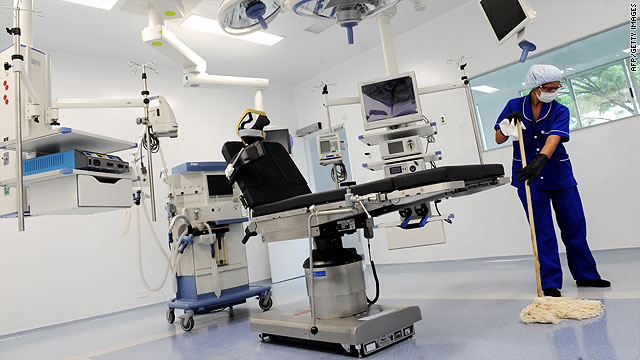
On June 17th, we held an open meeting to discuss experiences of hospital-acquired infection, the frequency and causes of these infections, and what we, as healthcare consumers, can do to decrease the risks of readmission.The unfortunate reality is that hospital-acquired infections are estimated to cause 8,000 to 12,000 deaths a year in Canada, so as a group we decided to focus on patient stories to highlight gaps in patient safety. We compared hospital practices and policies surrounding patient engagement and infection control, and came to some surprising conclusions. For example, although patient safety is everyone's problem there are too few public engagement initiatives on handwashing. Additionally, many drew a blank when asked how their respective hospitals disseminate public information on infection control. Do we need greater public awareness and engagement in and out of hospitals?
Alerting visitors of current infections upon entrance is a quick and painless way to positively affect handwashing behavior. Similarly, hospitals should promote their tally of days 'infection free', which both rewards the institution and reminds visitors that they are a part of the solution.
Here's an example of how a Toronto-based hospital thought 'outside the box' for infection control incentives.
Additionally, we discussed how there is an opportunity to introduce Key Performance Indicators that measure whether these processes that work to prevent infection are in place.
Twitter was used throughout the meeting to share discussion topics and comments, and to pose questions to participating members across Canada. We invite you to check out the hashtag #PACattends to view up-to-date posts on our activities. Here are some highlights from the evening's online discussion via @PatientsAssocCa:
'Patients must be made aware of earliest signs of infection', especially upon release.'
'How does your hospital disseminate msgs about infections?'
'Finding solutions for different types of hospitals, from downtown to rural. Meaningful metrics and expectations created /w patients.'
'How aware are you of your hospital's current infections? does it display upon entrance? let's talk about changing behaviors.'
'Patient is assumed to be comatose or dead, as victims of HAIs', few expectations of patients in helping to reduce risks.'
'Building community awareness about handwashing and avoiding hospitals when you suspect illness. little steps, big changes!'
